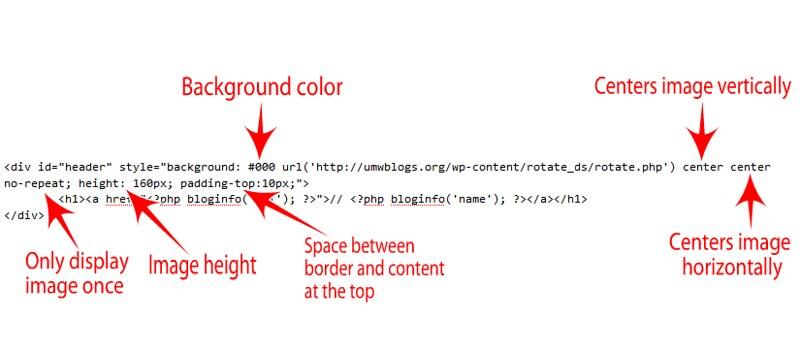
APA (American Psychological Association) format is extensively used in academic writing to ensure accuracy and consistency in citing sources and formatting papers. Whether you are a student or a researcher, understanding how to use APA format is crucial for presenting your work professionally. This article will guide you through the fundamental elements of APA format, such as in-text citations, reference lists, and overall paper structure, enabling you to produce high-quality academic papers that adhere to APA guidelines. By adopting this format, you will not only elevate the credibility of your work, but also align with the standards expected in various fields, including psychology, education, and social sciences.
APA Format Basics
Paragraph 1:
The American Psychological Association (APA) has developed a set of guidelines and formatting rules known as APA format, which is commonly used in academic papers, journals, and publications. Understanding the basics of APA format is essential for students, researchers, and professionals alike. These guidelines ensure consistency in presenting information, making it easier for readers to understand and reference the sources used. By following the APA format, you can effectively communicate your ideas and research findings in a clear and organized manner.
Paragraph 2:
One key aspect of APA format is the title page. This page includes the title of your paper, your name, and the name of your institution. It should also include a running head, which is a shortened version of your title, and a page number. The title page is the first impression readers will have of your paper, so it is important to format it correctly. Remember to use a clear and concise title that reflects the content of your paper, and to center all the information on the page.
Paragraph 3:
Another important element of APA format is the formatting of headings and subheadings. Headings help to organize your paper and make it easier for readers to navigate through the content. In APA format, there are five levels of headings, each with specific formatting guidelines. Level 1 headings are centered, bolded, and use title case capitalization. Level 2 headings are left-aligned, bolded, and use title case capitalization. Similar patterns continue for subsequent levels. Using headings consistently throughout your paper will improve its readability and structure.
Paragraph 4:
In-text citations are a fundamental part of APA format, as they give credit to the sources you have used and allow readers to locate those sources themselves. In APA format, in-text citations typically include the author’s last name and the publication year. They can appear within the body of your paper or in parentheses at the end of a sentence. It is important to properly format and punctuate your in-text citations to avoid plagiarism and provide accurate referencing.
Paragraph 5:
An APA format paper should also include a reference page at the end, listing all the sources cited in your paper. The reference page follows specific formatting guidelines, including hanging indents and alphabetized entries. Each source should include the author’s name, the date of publication, the title of the work, and additional publication information, depending on the type of source. The reference page is crucial for your readers to find and verify the sources you have used. By following the APA format guidelines for this page, you will ensure that your references are correctly formatted and consistently presented.

Essential Guidelines for Formatting Your Paper in APA Style
Formatting your paper in APA Style can seem intimidating at first, but with these essential guidelines, you’ll be able to navigate the intricacies of APA format with ease. By following these tips, you’ll ensure your paper meets the standard requirements, making it easier for readers to follow your ideas and sources.
Margins and spacing: APA Style requires you to set uniform 1-inch margins on all sides of your paper. Additionally, use double-spacing throughout your entire document. This includes the title page, abstract, main body, and references. By maintaining consistent margins and spacing, your paper will have a polished and professional appearance.
Title page: The title page is the first impression of your paper, so make it count. Center-align the title of your paper in bold font at the top of the page. Below it, include your name, institutional affiliation, and the date. Remember to use proper capitalization for the title. Additionally, ensure your title is no longer than 12 words and avoid using unnecessary abbreviations or jargon.
Headings and subheadings: APA Style provides a clear hierarchy for organizing your paper. Use different levels of headings to indicate different sections and subsections. Major headings should be centered and formatted in bold, while subheadings should be aligned to the left and formatted in italics or bold, depending on the level. This structure helps readers understand the organization of your paper and locate specific information easily.
In-text citations: APA Style requires in-text citations to acknowledge the sources you’ve used in your paper. When referring to an author directly, include their name and the publication year in parentheses. For example, (Smith, 2022). If you’re citing a specific page or section, include the page number separated by a comma, like this: (Smith, 2022, p. 45). Make sure to create a corresponding reference entry for each citation in your reference list.
Reference list: The reference list is where you provide full details of the sources you cited in your paper. It should start on a new page, with the heading “References” centered at the top. Alphabetize the entries based on the last name of the author. Each entry should follow a specific format depending on the source type, such as books, journal articles, or websites. Pay attention to punctuation, italics, and capitalization rules to ensure accuracy. Consulting the APA manual or online resources can provide guidance on citing various sources.
By following these , you will create a well-structured and properly cited piece of academic writing. Remember to consistently apply APA rules throughout your entire paper, from the title page to the reference list. Following APA format provides a standardized framework that enhances the clarity and credibility of your research. Take the time to double-check your formatting before submitting your paper, and you’ll be on your way to mastering APA Style.

Structuring Your Paper: Title Page, Abstract, and Body
Title Page
The title page is the first page of your APA formatted paper. It serves as the cover page and contains essential information about your paper. Here’s what should be included on the title page:
- Title: Clearly state the title of your paper in a concise and descriptive manner.
- Author’s Name: Include your full name or the names of all authors of the paper.
- Affiliation: Specify the institution or organization you are affiliated with.
- Course Name and Number: Provide the course name and number for which the paper is being submitted.
- Instructor’s Name: Mention the name(s) of your instructor(s) or professor(s).
- Date: Include the date of submission or the date your paper was completed.
Abstract
The abstract is a concise summary of your paper, usually limited to 150-250 words. Its purpose is to convey the main points and key findings of your research, allowing readers to decide if they want to read the full paper. Here are some tips for writing an effective abstract:
- Be Clear and Concise: Clearly state the purpose, methodology, results, and conclusions of your study in a brief but informative manner.
- Focus on Key Information: Highlight the most important aspects of your research, including any significant findings or implications.
- Avoid Citations and Abbreviations: Since the abstract should stand alone, avoid referencing other works or using abbreviations that may be unfamiliar to the reader.
- Use Keywords: Include relevant keywords that accurately represent the content of your paper, making it easier for others to find your research.
Body
The body of your paper is where you present and discuss your research in detail. It should be well-organized and divided into sections based on the topics or aspects you will be addressing. Here are some guidelines for structuring the body of your APA formatted paper:
- Introduction: Start with an introduction that provides background information on the topic, states the research question or objective, and outlines the overall structure of the paper.
- Methods: Describe the methods you used to conduct your research, including the participants, materials, and procedures.
- Results: Present your findings, including any statistical analyses or data visualizations, in a clear and logical manner.
- Discussion: Interpret and analyze your results, discussing their implications, limitations, and potential future research directions.
- Conclusion: Summarize the main points of your paper, restate your research question or objective, and provide a final thought or suggestion for further exploration.
Additional Considerations
When structuring your paper, there are a few additional considerations to keep in mind:
- Headings and Subheadings: Use clear and informative headings to organize your paper and guide the reader through your content.
- In-Text Citations: Whenever you make reference to another author’s work, include an in-text citation in APA format to give proper credit.
- References: Include a comprehensive list of references at the end of your paper, following APA guidelines.
- Formatting and Style: Ensure your paper follows APA formatting rules, such as double-spacing, 1-inch margins, and a legible font (e.g., Times New Roman, 12pt).
Sample APA Title Page
| APA Format Title Page | |
|---|---|
| Title | Your Title Goes Here |
| Author(s) | Your Name(s) |
| Affiliation | Your Institution or Organization |
| Course | Course Name and Number |
| Instructor(s) | Instructor’s Name(s) |
| Date | Date of Submission |

Citing Sources in APA Style: In-text Citations and Reference List
Citing sources in APA Style is an essential skill for anyone conducting academic research or writing scholarly papers. Properly citing your sources helps to give credit to the original authors and also allows readers to locate and verify the information you have used. In this post, we will explore the two main aspects of citing sources in APA Style: in-text citations and the reference list.
In-text citations: When using APA format, it is important to include in-text citations whenever you directly quote, paraphrase, or summarize someone else’s work. These citations help readers identify and locate the original source of the information. In-text citations typically include the author’s last name and the year of publication, enclosed in parentheses. For example: (Smith, 2022). If the author’s name is not available, you can use the title of the article or book instead.
Formatting in-text citations: In APA Style, the format of in-text citations may vary depending on the number of authors and the type of source. For instance, if a work has one or two authors, include both names in every citation. However, if a work has three or more authors, the first time it is cited, include all the authors’ names. In subsequent citations, use et al. after the first author’s name. It is essential to use the same citation style consistently throughout your paper.
The reference list: The reference list is an alphabetized list of all the sources you have cited in your paper. It provides complete information for readers to locate and verify the sources you have referenced. Each entry in the reference list should include the author’s name, the year of publication, the title of the work, and publication information. Remember to use a hanging indent for each entry, where the first line is flush with the left margin and subsequent lines are indented.
Formatting the reference list: The format for each type of source in the reference list may vary slightly. For example, books should include the author’s full name, publication year, title, and publisher. Journal articles should include the author’s name, publication year, article title, journal title, volume, and page numbers. Online sources should include the author’s name, publication or updated date, title, and URL. Consult the APA Style guide or use online citation tools for accurate and detailed instructions on formatting various types of sources.
Using APA format in WordPress: When creating content in WordPress, you can easily format your citations using HTML tags, such as for italics and for bold. WordPress also offers default styling for tables, making it convenient to present citation examples or organize complex reference information. Remember to review your citations and reference list carefully before publishing your work to ensure accuracy and adherence to APA guidelines.
Using APA format for citations and reference lists may seem challenging at first, but with practice and attention to detail, it becomes easier. Incorporating proper citations not only demonstrates your commitment to academic integrity but also allows readers to engage with your research more effectively. By following the guidelines provided in this post, you will be on your way to mastering the art of citing sources in APA Style.
Additional Considerations and Best Practices for Using APA Format
There are several additional considerations and best practices to keep in mind when using APA format for your academic papers. Familiarizing yourself with these guidelines will help ensure that your work is well-organized, properly cited, and conforms to the standards set by the American Psychological Association.
Use clear and concise language: APA format emphasizes the use of clear and concise language to convey your ideas effectively. Avoid unnecessary jargon or overly complex explanations. Remember to use straightforward and precise language to help readers understand your arguments easily.
Organize your paper with headings and subheadings: APA format encourages the use of headings and subheadings to enhance the structure and readability of your paper. By dividing your content into distinct sections, you can guide your readers through the key points of your research. Use bold formatting for major headings (Level 1) and italics for subheadings (Level 2).
Properly cite your sources: Accurate and proper citation is essential when writing in APA format. Make sure to cite all sources used in your paper, both within the text and in your reference list at the end. Use the author-date citation method, including the last name of the author and the year of publication. When directly quoting, include the page number as well.
Create a consistent reference list: Your reference list should be organized alphabetically by the last name of the author. Each entry should include the author’s name, publication year, title of the work, and publication details. In-text citations should correspond to the full reference in the list. Double-check this section to ensure accuracy and consistency.
Pay attention to formatting details: APA format has specific rules for formatting your paper. Pay attention to details such as font type and size (Times New Roman, 12-point), line spacing (double), margins (1 inch), and indentation (½ inch). Additionally, include a title page with your title, name, and institution affiliation. Insert page numbers in the header, aligned to the right.
Remember, following the additional considerations and best practices outlined above will help you navigate the complex world of APA format with confidence. By adhering to these guidelines, you can ensure that your paper is well-structured, properly cited, and easily understood by readers.
Q&A
Q: What is APA format?
A: APA format stands for the American Psychological Association format. It is a set of rules and guidelines used in academic writing to ensure consistency and uniformity in the presentation of research papers, essays, and other scholarly works.
Q: Why is it important to use APA format?
A: Using APA format is crucial in the field of social sciences and many other disciplines. It allows readers to easily locate and understand the information presented in a paper. Additionally, adhering to APA guidelines shows respect for the work of others and promotes professionalism in academic writing.
Q: How do I format an APA paper?
A: An APA paper typically includes a title page, abstract, introduction, main body, conclusion, and references section. The paper should be double-spaced, with specific margins, font style, and size. Headings and subheadings should be used to organize the content. Citations and references should follow specific guidelines provided by the APA manual.
Q: How do I cite sources in APA format?
A: In APA format, citations within the text are presented in parentheses with the author’s last name and the year of publication. For example, (Smith, 2021). If a direct quote is used, the page number should also be included, like this: (Smith, 2021, p. 45). At the end of the paper, a references page should be included, which lists all the sources cited in the paper.
Q: What are the basic formatting guidelines for an APA reference page?
A: A reference page in APA format should be alphabetized by the author’s last name and formatted with a hanging indent. Each reference should include the author’s name, publication year, title of the work, and publication information. The exact format may vary depending on the type of source (e.g., book, journal article, website).
Q: Can you provide an example of an APA citation for a book?
A: Sure! An example of an APA citation for a book would be: Smith, J. (2021). The Art of Academic Writing. New York, NY: Publishing House.
Q: Are there any online resources or tools available to help with APA formatting?
A: Yes, there are several online resources and tools available to assist with APA formatting. Websites like Purdue Online Writing Lab (OWL) and the APA Style website provide guidelines, examples, and tutorials on how to use APA format correctly. Additionally, citation generators such as EasyBib or Citation Machine can help generate accurate citations and references.
Q: Is it necessary to use a specific software to format an APA paper?
A: No, it is not necessary to use a specific software to format an APA paper. Most word-processing software, such as Microsoft Word or Google Docs, come with built-in templates that follow APA guidelines. These templates can be easily customized to suit individual needs.
Q: Can I use APA format if I am not writing an academic paper?
A: APA format is primarily used in academic writing, especially in the social sciences. However, the usage of APA format can extend beyond academic papers to include reports, presentations, and other written pieces that require proper citation and referencing.
Q: Where can I find the complete rules and guidelines for APA format?
A: The latest edition of the Publication Manual of the American Psychological Association (currently the 7th edition) is the authoritative source for APA format guidelines. It is widely available in print and online and contains detailed instructions on formatting, citing sources, and other important aspects of academic writing in APA style. In conclusion, understanding and effectively utilizing the APA format is an essential skill for any student or academic writer. By following the guidelines provided in this article, you can ensure that your research papers and publications meet the established standards of organization, citation, and formatting required by the American Psychological Association. Remember to use the APA format consistently throughout your document, paying close attention to details such as in-text citations, reference lists, headings, and margins. Moreover, make use of the numerous resources available, such as online citation generators and style guides, to assist you in correctly implementing the APA format. By mastering this widely recognized style, you will not only demonstrate your attention to detail and professionalism but also contribute to the credibility and clarity of your academic work. Happy writing!






